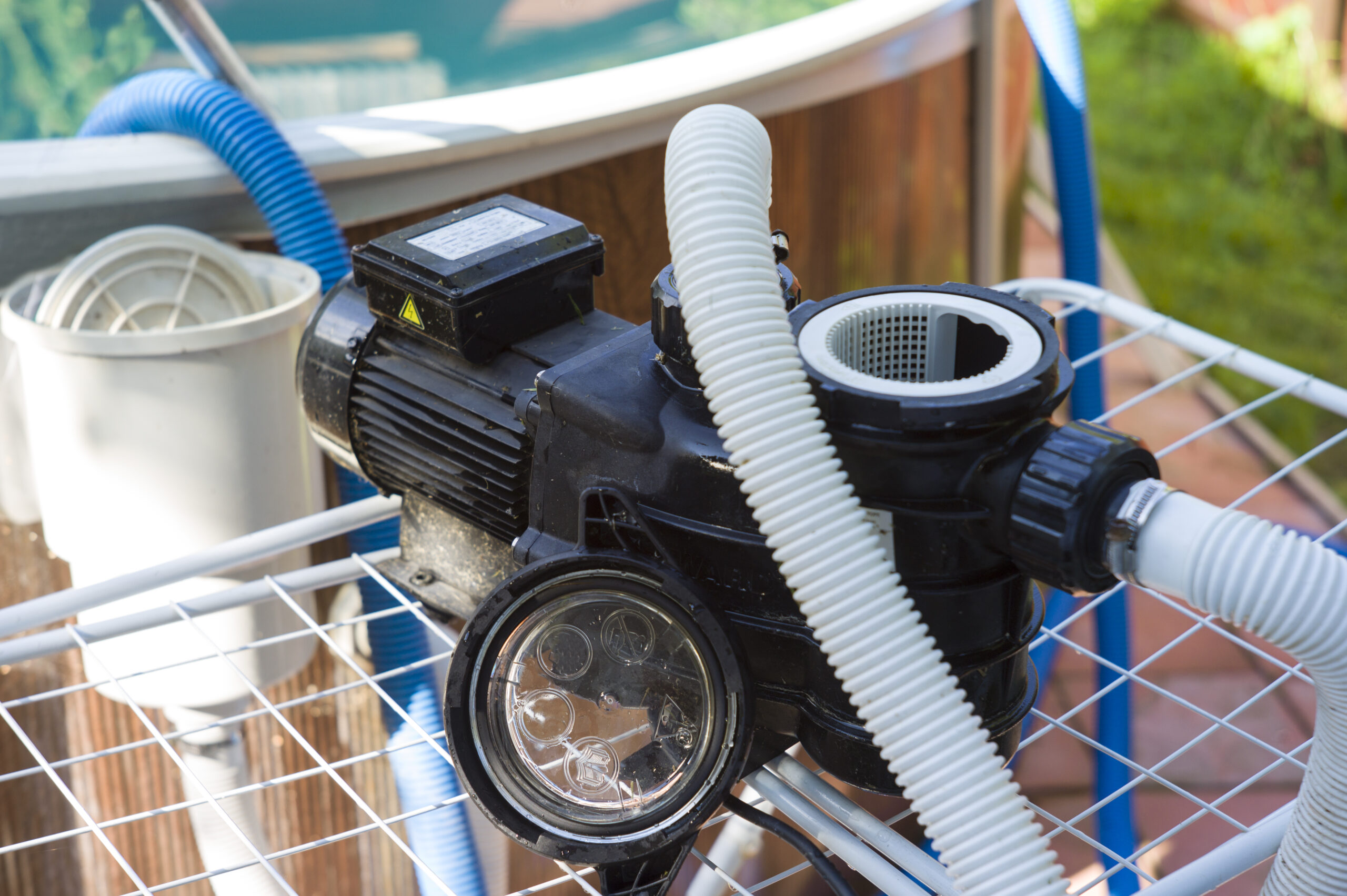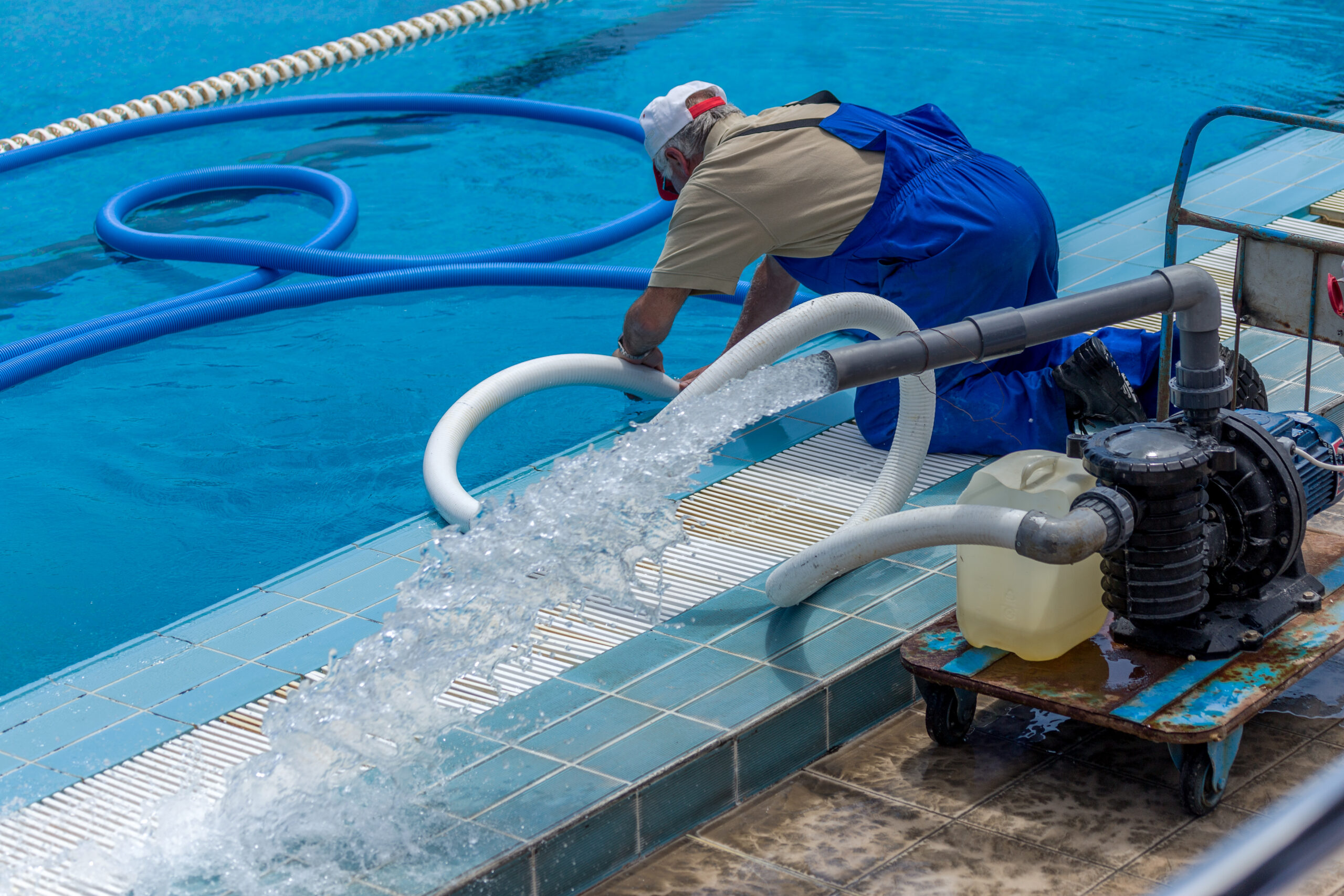You’re considering a variable speed pool pump, but you’re not sure what benefits it holds.
You’ve come to the right place! We’ll explore how these pumps outperform their single-speed counterparts in energy efficiency and cost savings, plus their maintenance advantages.
Let’s dive into finding the perfect variable speed pool pump for your needs.
Understanding Variable Speed Pool Pumps

You’re about to find out how variable speed pool pumps work and why they’re a game-changer for your swimming pool.
Unlike single or dual-speed pumps, these pumps operate at different speeds, tailored to the task at hand. The result? Enhanced efficiency, pump noise reduction, and extended lifespan of the pump.
When you’re just circulating water for filtration purposes, there’s no need to run the pump at full tilt. A variable speed pump can slow down, conserving energy while still getting the job done. This slower operation significantly reduces noise levels – a major perk if your pool is close to your living areas.
The ability to adjust its pace also extends the life of the pump. Running continuously at high speeds generates heat and wear that shorten a pump’s lifespan. By moderating its speed according to demand, a variable speed pump minimizes this stress on its components.
In essence, understanding this technology enables mastery over your pool system’s functioning. It’s not just about saving money on energy bills; it’s about optimizing performance for longevity and quiet operation – key factors in enhancing your overall pool experience.
Energy Efficiency of Variable Speed Pool Pumps
They’re significantly more energy-efficient than their single-speed counterparts. As you delve into the mechanics of variable speed pool pumps, you’ll find that they operate on permanent magnet motors similar to those in electric cars, unlike traditional induction motor pumps. This advanced technology contributes to their superior efficiency.
The science behind this is simple: by adjusting the speed, these pumps only use the energy they need for each task. They don’t run at full tilt all day; instead, their speeds vary based on your pool’s needs – reducing energy costs and improving pump longevity.
Furthermore, a slower flow rate results in less friction in your pool’s plumbing system which further increases energy efficiency. Think about it: lower stress on your equipment means extended lifespan for every component involved.
Noise reduction is another major advantage. Variable speed pumps are significantly quieter due to their ability to operate at lower speeds. You’ll notice a considerable difference – allowing you to enjoy peaceful afternoons by the pool without any irritating background noise from an overworked pump.
Mastering these concepts will equip you with valuable knowledge when considering an upgrade or replacement of your current pool pump system.
Cost Savings With Variable Speed Pool Pumps
In your quest to save money, it’s worth noting that these innovative systems can significantly cut down on your energy bills. Variable speed pool pumps offer unparalleled financial benefits through their efficiency and long pump lifespan.
These pumps operate dynamically, adjusting the flow rate as required by the pool. This optimizes energy consumption and reduces operating costs over time. The variable speed technology drastically extends the pump lifespan due to reduced mechanical stress from constant high-speed operation found in single-speed models.
Moreover, they incorporate noise reduction features. At lower speeds, these pumps are virtually silent – a stark contrast to their single or dual-speed counterparts that frequently operate at maximum RPMs causing excessive noise. This means you’re not only saving on energy costs but also enhancing your poolside experience with quieter operation.
Understanding how variable speed pool pumps provide cost savings requires a grasp of their working principle and benefits over conventional models. They may have higher upfront costs compared to traditional ones; however, their extended lifespans and lower operational expenses translate into substantial savings over time.
Maintenance Advantages of Variable Speed Pool Pumps
Beyond the cost savings, it’s also easier to maintain these advanced systems due to their self-adjusting features and longer lifespan. Variable speed pool pumps are designed with pump longevity in mind, meaning less frequent replacements and repairs for you.
Three reasons why you’ll find this technology advantageous:
1. Self-Adjusting Features: The sophisticated microprocessors in variable speed pumps allow them to auto-correct operational parameters as conditions change.
2. Pump Longevity: These units have significantly longer lifespans than single-speed pumps because they run at lower speeds most of the time, reducing wear and tear on the components.
3. Noise Reduction: Operating at lower speeds not only improves pump longevity but also significantly reduces noise output-a clear win-win situation.
By investing in a variable speed pool pump, you’re not just saving money-you’re embracing a solution that simplifies your maintenance routine, extends your equipment’s lifespan, and provides a quieter operation environment.
Master the art of maintaining your pool with cutting-edge technology that optimizes efficiency and performance while minimizing noise pollution and long-term costs.

Choosing the Right Variable Speed Pool Pump for Your Needs
Choosing the right equipment for your needs can be a challenging task, but it’s essential to understand that not all pumps are created equal. When selecting a variable speed pool pump, two critical factors you should consider are pump durability and the installation process.
Pump durability is paramount in ensuring long-term performance. Look for features like corrosion-resistant materials and robust seals that extend the life of the pump. It’s also beneficial if the pump has built-in diagnostics to detect potential issues before they escalate into costly repairs.
The installation process is another crucial aspect of your decision-making. While some may opt for DIY installations, professional setup is recommended due to the complex nature of these devices. A correctly installed pump optimizes its efficiency and prevents future problems related to improper setup.
Lastly, don’t overlook the value of energy efficiency and noise reduction capabilities in your selection process. These additional features can significantly improve your overall pool experience while reducing operational costs.
Frequently Asked Questions
What Are the Potential Drawbacks of Using Variable Speed Pool Pumps?”
While variable speed pumps boast energy efficiency, you might face initial high costs. In your cost analysis, consider the upfront investment against long-term savings. Additionally, they’re complex to install and require professional help.
How Long Does It Typically Take to Install a Variable Speed Pool Pump?”
You can typically install a variable speed pool pump in 2-4 hours. However, it’s essential to conduct a cost analysis and consider pump efficiency during the installation process for optimal performance.
Are There Any Special Safety Precautions I Should Take When Using a Variable Speed Pool Pump?”
Yes, you’ll need to ensure proper grounding for energy efficiency and cost savings. Always disconnect power before maintenance. Don’t exceed pump’s max speed and regularly check for debris to avoid overheating or malfunction.
Can I Install a Variable Speed Pool Pump by Myself, or Should I Hire a Professional?”
You can install a variable speed pump yourself, but hiring a professional ensures optimal pump efficiency. They’ll conduct a cost analysis, determining the best setup for energy savings. Make sure you’re confident in your abilities before DIY-ing.
What Types of Pool Sizes or Designs Might Not Be Suitable for a Variable Speed Pool Pump?”
Tiny pools might not benefit from a variable speed pump due to their lower water volume. Also, complex designs with multiple features may need additional pumps for optimal efficiency, raising your cost analysis.
